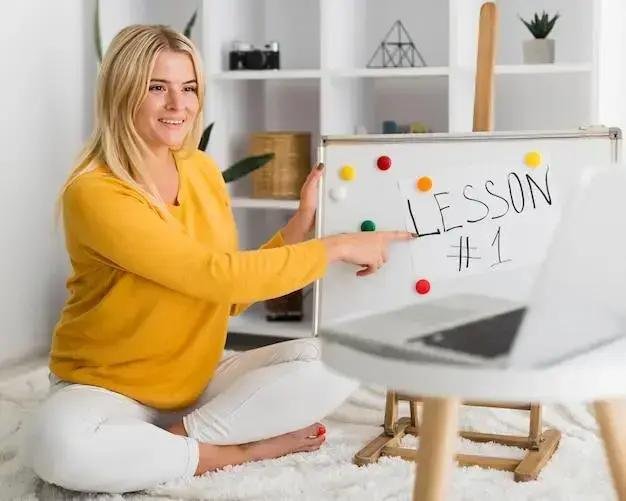If you’ve ever wondered how to improve sketching skills, you’re not alone. Many aspiring artists struggle to find the right techniques that can elevate their drawing game.
Whether you’re a beginner or looking to refine your existing abilities, there are several effective methods to enhance your sketching prowess.
In this article, we’ll explore five practical tips that can help you develop your skills and boost your confidence as an artist. So grab your pencils and let’s dive in!
Practice Regularly: The Key to Mastery
When it comes to improving your sketching skills, practice regularly is undoubtedly the most crucial factor. Just like any other skill, the more you sketch, the better you become. It’s all about building muscle memory and getting comfortable with your tools.
Start by setting aside a specific time each day to draw. Even if it’s just for 15-30 minutes, consistency is key. You might think, ‘I’m too busy to sketch every day,’ but remember, even short sessions can lead to significant improvements over time.
Try to mix things up during your practice sessions. One day, focus on drawing objects from life—like your coffee cup or a plant on your desk. The next day, you might want to sketch from photos or even try drawing people in public places. This variety will not only keep your practice interesting but will also challenge you to adapt to different subjects and styles.
Additionally, consider keeping a sketchbook dedicated solely to practice. This way, you can track your progress over time. Looking back at older sketches can be incredibly motivating, as you’ll see how far you’ve come. Plus, it’s a great way to experiment without the pressure of creating a perfect piece.
Remember, the goal isn’t to create a masterpiece every time you pick up your pencil. It’s about the journey and the experience of sketching. So, embrace the process, make it a habit, and watch your skills improve!
Study the Basics of Form and Proportion
Understanding the basics of form and proportion is essential for any artist looking to improve their sketching skills. These foundational concepts will help you create more accurate and realistic drawings, no matter the subject.
Let’s start with form. Everything you see can be broken down into basic shapes—cubes, spheres, cylinders, and cones. When you sketch, try to visualize the object you’re drawing in these simple forms. For example, if you’re drawing a human figure, think of the head as a sphere, the torso as a cylinder, and the limbs as elongated shapes. This approach will help you grasp the overall structure and make it easier to add details later.
Next up is proportion. Proportion refers to the size relationship between different parts of your subject. For instance, when drawing a face, it’s important to understand where the eyes, nose, and mouth should be placed in relation to each other. A common technique is to use guidelines to help maintain proper proportions. You can lightly sketch horizontal and vertical lines to mark where key features should go. This will serve as a reference throughout your drawing process.
Another helpful tip is to study the works of other artists—especially those who excel in portraying form and proportion. Analyze how they construct their drawings and what techniques they use to achieve accurate representations. You can even try replicating their work to better understand their methods.
Lastly, don’t forget to practice! Spend time sketching various objects and figures, focusing specifically on breaking them down into basic forms and ensuring correct proportions. The more you practice, the more intuitive these concepts will become, ultimately enhancing your overall sketching skills.
Experiment with Different Materials and Techniques
One of the most exciting ways to enhance your sketching skills is to experiment with different materials and techniques. This not only keeps your practice fresh and engaging but also helps you discover what works best for your personal style.
Start by exploring various drawing tools. Pencils come in different hardness levels, which can affect the darkness and texture of your lines. Try using softer pencils for richer, darker shades, and harder pencils for lighter, finer lines. You might also want to experiment with charcoal, ink, or colored pencils to see how they influence your sketches.
Don’t stop at just pencils! Consider trying out different papers as well. Some papers are smoother, which is great for fine details, while others have more texture, allowing for interesting effects with shading and blending. You might find that certain materials spark your creativity in ways you didn’t expect.
In addition to materials, play around with different techniques. For instance, you can practice hatching and cross-hatching for shading, or try stippling for a unique dotted effect. You might even want to explore mixed media, combining drawing with watercolor or digital tools. This experimentation can lead to surprising and delightful results!
Another fun idea is to set challenges for yourself. For example, spend one week only using charcoal or try sketching with your non-dominant hand. These challenges can push you out of your comfort zone and help you develop new skills.
Ultimately, the goal is to find joy in the process of creating. By experimenting with different materials and techniques, you’ll not only improve your sketching skills but also develop a unique artistic voice that reflects your personality. So, get out there and start exploring!
Analyze and Learn from Other Artists
One of the most effective ways to improve your sketching skills is to analyze and learn from other artists. Whether they’re famous masters or local talents, studying their work can provide valuable insights and inspiration.
Start by observing the techniques they use. Look closely at how they handle line work, shading, and texture. What materials do they prefer? How do they approach composition? By breaking down their work, you can learn a lot about their artistic process and apply similar techniques to your own sketches.
Consider visiting art galleries or exhibitions, where you can see artwork up close. Pay attention to the details—notice how different artists interpret the same subject. This can help you appreciate various styles and methods, broadening your artistic perspective.
Another great resource is online platforms like Instagram, Pinterest, or art forums. Follow artists whose work resonates with you and engage with their content. Many artists share their process through time-lapse videos or tutorials, which can be incredibly helpful for understanding how they achieve their results.
Don’t hesitate to reach out to artists for feedback or advice. Many are open to sharing their experiences and tips, especially if you express genuine interest in their work. You might even consider joining local art groups or online communities where you can share your sketches and receive constructive criticism.
Finally, try replicating some of their work as a learning exercise. This doesn’t mean you should pass it off as your own, but rather use it as a way to practice and understand their techniques. As you sketch, ask yourself questions about their choices and how you can incorporate similar elements into your style.
Incorporating insights from other artists into your practice can be a game-changer. It not only enhances your skills but also helps you develop a deeper appreciation for the art form itself. So, keep your eyes open and learn from those who inspire you!
Keep a Sketchbook: Document Your Progress
Keeping a sketchbook is one of the most beneficial practices for any artist looking to improve their sketching skills. Not only does it provide a space for experimentation and creativity, but it also allows you to document your progress over time.
First and foremost, having a dedicated sketchbook encourages you to draw regularly. It becomes a safe space where you can freely express your ideas without the pressure of creating a finished piece. You can doodle, practice techniques, or sketch anything that inspires you at the moment—no rules, just creativity!
Additionally, your sketchbook serves as a visual diary. By regularly flipping through its pages, you can see how much you’ve grown as an artist. It’s incredible to look back at your earlier sketches and recognize the improvements you’ve made. This can be a huge confidence booster, especially on days when you feel stuck or uninspired.
To make the most of your sketchbook, consider setting specific goals for each session. For example, you might focus on drawing a particular subject, experimenting with new techniques, or practicing proportions. Write notes alongside your sketches to reflect on what worked well and what didn’t. This will help you identify areas for improvement and track your development.
Don’t worry about perfection! Your sketchbook is for exploration and experimentation, so embrace the mistakes and imperfections. They are all part of the learning process. Some artists even enjoy revisiting old sketches to see how they would approach them differently now, which can be a valuable exercise in growth.
Lastly, consider sharing your sketchbook with others—whether it’s friends, family, or an online community. This not only creates a sense of accountability but also opens up opportunities for feedback and encouragement. You might be surprised at how much support you receive!
In summary, keeping a sketchbook is an essential practice for any artist. It fosters creativity, documents your journey, and ultimately helps you become a more skilled and confident sketcher. So grab a sketchbook and start filling those pages!
Conclusion
Improving your sketching skills is a rewarding journey that requires dedication, creativity, and a willingness to learn. By practicing regularly, studying the basics of form and proportion, experimenting with different materials and techniques, analyzing the work of other artists, and keeping a sketchbook to document your progress, you can develop a strong foundation and find your unique artistic voice.
Remember, every artist’s path is different, and growth takes time. Embrace the process, celebrate your progress, and don’t shy away from challenges. With persistence and passion, your sketching skills will flourish, and you’ll discover the joy of creating art that truly reflects your vision.
Frequently Asked Questions about Improving Sketching Skills
How often should I practice sketching?
Aim to practice sketching daily, even if it’s just for 15-30 minutes. Consistency is key to improvement.
What materials should I use for sketching?
Experiment with different materials like pencils, charcoal, ink, and various papers to find what works best for you.
What are the basics of form and proportion?
Understanding form involves breaking down objects into basic shapes, while proportion refers to the size relationships between different parts of your subject.
How can I learn from other artists?
Analyze their techniques, follow them on social media, visit galleries, and consider replicating their work for practice.
Why is keeping a sketchbook important?
A sketchbook allows you to document your progress, experiment freely, and reflect on your growth as an artist.
What should I include in my sketchbook?
Include sketches, notes on techniques, reflections on your progress, and any creative ideas that come to mind.





